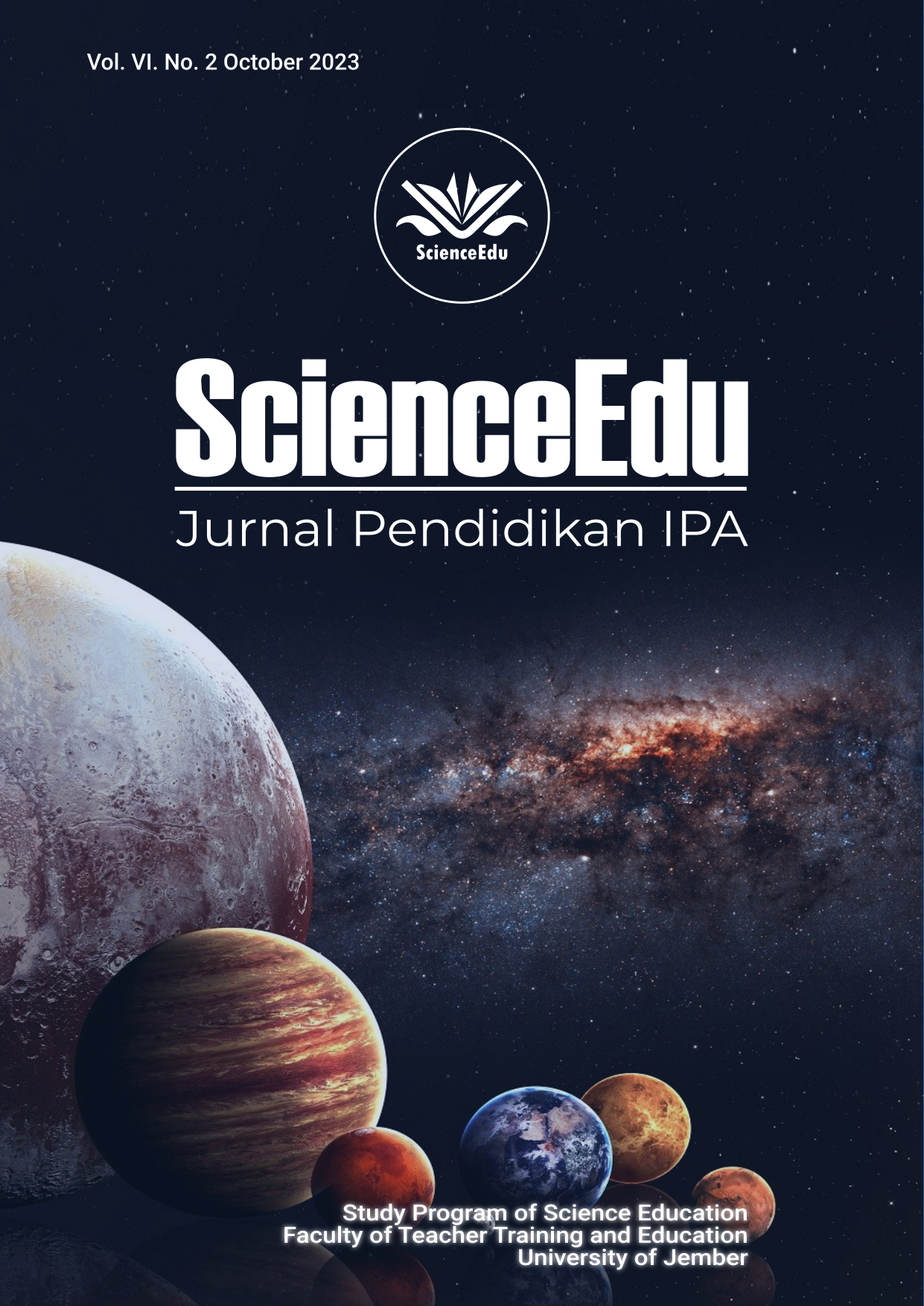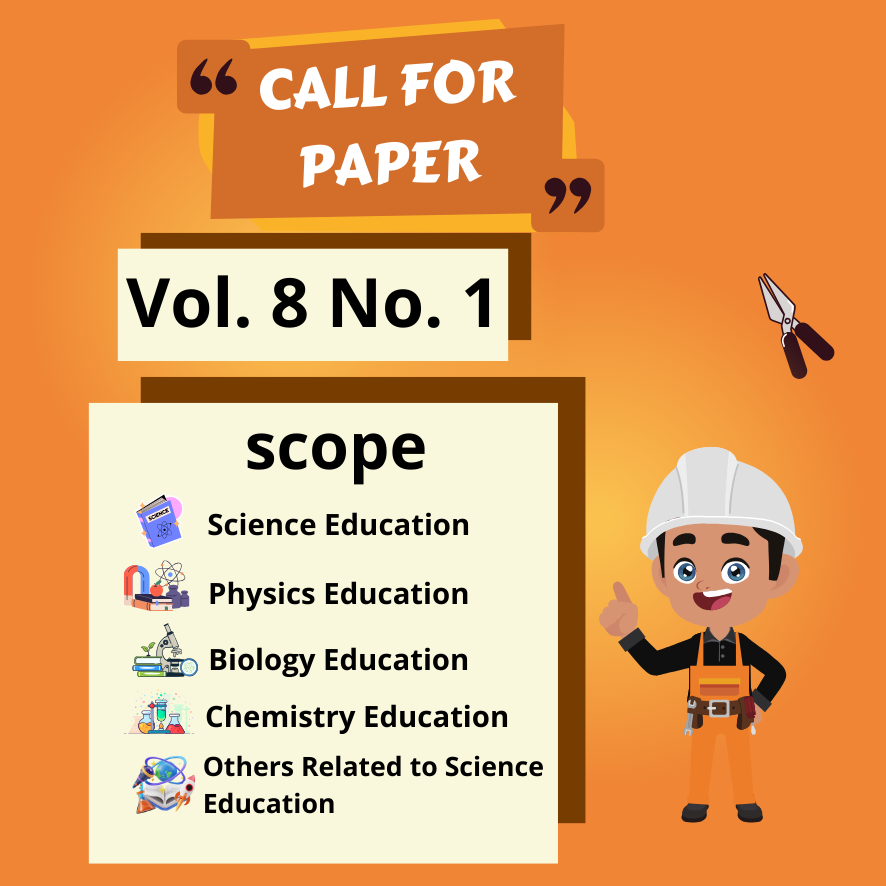PENGARUH PEMBELAJARAN BLANDED TERHADAP PEMAHAMAN KONSEPTUAL FISIKA MEKANIK MAHASISWA TEKNIK ELEKTRO UNIVERSITAS MUHAMMADIYAH JEMBER
DOI:
https://doi.org/10.19184/se.v6i2.39510Abstract
PTM (face-to-face restrictions) makes elementary to high school education experience a less than optimal learning process; it has an impact on decreasing the understanding and maturation of subject concepts or courses by students. Face-to-face restrictions (PTM) make all educators make many changes to learning systems and methods so that they can fill the time from the lack of teaching materials. Based on the problem of declining conceptual understanding of basic mechanical physics, the author conducts research with models and develops blended learning concepts. The novelty of this research is based on the point of view of scope and time, so it is not just in applying online and offline learning. Based on the development of the blended learning design model, which is quite varied, the author tries to design and develop the Pannan and Legge design model. This blended learning design model is quite simple, namely combining online and offline learning. The results of research conducted by the author related to the blended learning method are 8 online meetings and 8 offline meetings. This learning method indicator uses a questionnaire conducted by the lecturer of the Basic Mechanical Physics course for students of the classes of 2018, 2019, 2020, and 2021. The results of the questionnaire on the total students of the classes of 2018, 2019, 2020, and 2021 are 82%, which means that 82% of students can accept the blended learning method with the Pannan and Legge models that have been carried out.
Downloads
References
Cennamo, K., & Kalk, D. Real World Instructional Design. 2005. Canada: Thompson Learning, Inc.,
Dabbagh, N., & Ritland, B. B. 2005. Online Learning: Concepts, Strategies and Application. New Jersey, USA: Merril Prentice Hall, Pearson Education Inc.,
Direktorat Jenderal Pembelajaran dan Kemahasiswaan. “Laporan Implementasi SPADA Indonesia, 2016. hh. 21-24.
Gustafson, K., & Branch, R. 2002. (Survey of Instructional Development Modelsn (Fourth Edition). New York: Clearninghouse on Infromation and Technology, Syracuse Unoversity.
Gustafson, K., & Branch, R. 2002. (Survey of Instructional Development Models (Fourth Edition). New York: Clearninghouse on Infromation and Technology, Syracuse University.
Hack, George. 2016. “an Instructional Design Model for Blended Higher Educationâ€, Journal of Learning and Teaching in Digital Age.
Jihyun Lee; Cheolil Lim; & Hyeonsu Kim (2017). “Development of an Instructional Design Model for Flipped Learning in Higher Educationâ€, Education Tech Research Dev vlume 65. hh. 427–453.
Kavita Gupta, Chaterine, M. Sleezer and Darlene F. Russ-Eft. 2007. A Practical Guide to Needs Assessment (San Fransisco: Pfeiffer, hh. 14-15.
Kenney, Jane; & Newcombe, Ellen. “Adopting a Blended Learning Approach: Challenges Encountered and Lessons Learned in an Action Research Studyâ€, Journal of Asynchronous Learning Networks, Volume 15: Issue 1. DOI: http://dx.doi.org/10.24059/olj.v15i1.
Littlejohn, A., & Pegler, C. 2007. Preparing for Blended e-Learning. New York, USA: Routledge.
Nadia Jaramillo Cherrez & Larysa Nadolny. 2017. “Customizing Students’ Learning Experiences While Designing an Online Courseâ€, International Journal of Design for Learning, Volume 8, Issue 2. hh. 14-29.
Pannan, L. & Legge, K. (2016). “A Blended Learning Model and a Design Model Combine to Support Academics in Pedagogical Redesign of the Curriculumâ€. In S.
Barker, S. Dawson, A. Pardo, & C. Colvin (Eds.). 2016. “Show Me the Learningâ€, Proceedings ASCILITE. Adelaide. hh. 487 – 497.
Piskurich, G. 2006. Rapid Instructional Design: Learning ID Fast and Right (Second Edition). San Fransisco, CA: Pfeiffer, John Wiley and Sons, Inc.
Reigeluth, C., & An, Y.-J., (2009), Theory Building dalam Instructional Design Theory and Models (Vol. III) (New York: Routledge, h. 376.
Richey, R., & Klein, J. 2007. Design and Development Research. New Jersey, USA: Lawrence Erlbaum Associates, Inc.
Rita Richey & Klein, J., 2007. Design and Development Research (New Jersey): Lawrence Erlbaum Associates, Inc., h. 1.
Seels, B., & Richey, R. 1994. Teknologi Pembelajaran: Definisi dan Kawasannya (Terjemahan). Jakarta: Ikatan Profesi Teknologi Pendidikan Indonesia bekerjsama dengan Lembaga Pengembang Teknologi Kinerja.
Smith, P., & Ragan, T. 2005. Instructional Design (Third Edition). USA: John Wiley & Sons, Inc.
Stockley. 2006. D. e-Learning Definition and Explanation. Retrieved from derekstockley.com.au: http://www.derekstockley.com.aud



